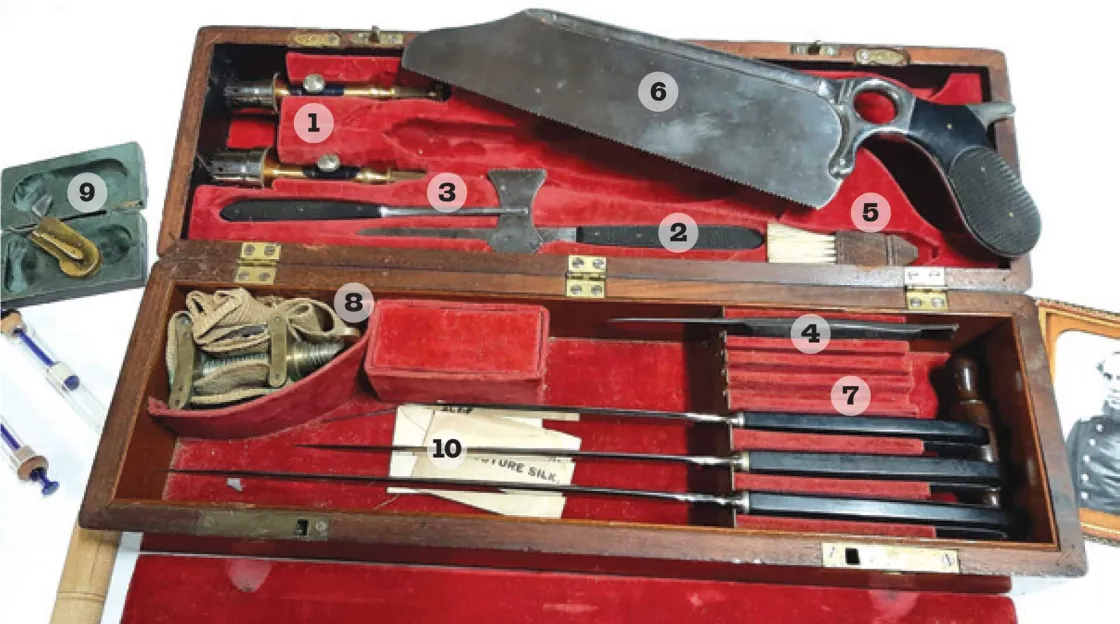
American Revolution reenactment Bath, S.C.
Surgeons for the U.S. Army were either regular army medical staff or certified volunteer militia surgeons. The former carried Army-issued surgical sets, but volunteer militia surgeons often brought their own. Dr. Rex Hovey’s kit appears to be standard issue and includes surgical tools for amputations and trephinations, a delicate procedure used to remove part of the skull to relieve pressure on the brain after injury.

The device used for trephination, known as a trephine (1), has an interchangeable wooden handle that can be placed on trephines of assorted sizes, and a rotating metal cutting head used to cut a hole in the skull. The trephine has a metal spike in the center of the cutting head to keep the material being cut in place and to secure its removal. Other implements used in the trephination process are a scalpel (2) and a Hey’s surgical saw (3), which has both a straight and curved tooth edge for cutting into the skull. A bone file (4) is used for smoothing edges and removing pieces of bone, and a bone brush (5) to remove bone dust.
Amputations were also complicated procedures that included much more precision than just sawing off a limb. Field surgeon kits such as Hovey’s contained several tools for the procedure, including a bone saw (6), two amputation knives and a catlin (7), a double-bladed surgical knife used to cut tissue between bones.
In 1718, French physician Jean-Louis Petit invented a new style of screw tourniquet used to tighten around a limb to stop bleeding. The “Petit Tourniquet” became the preferred style of surgical and battlefield hemorrhage control for almost 200 years. Hovey’s kit, and most Civil War surgeon’s kits included one (8) or more.
Surgeons weren’t always trying to stop the bleeding, however. During the 18th and 19th centuries, many illnesses or symptoms were believed to be caused by an excess of blood. Surgeons would withdraw blood to alleviate the conditions in a process known as bloodletting. A procedure known as venesection involved drawing blood from one of the body’s larger external veins, especially in the arm or neck. Surgeons most often used a fleam, such as this one (9), to lance open the vein with its triangular shaped blade. The device employed a spring-loaded lancet, with a hammer that cocked back and released much like a gun, allowing the operator to inject the blade into a vein without exerting manual pressure.
Dr. Hovey’s kit is complete with (10) silk and sutures.







